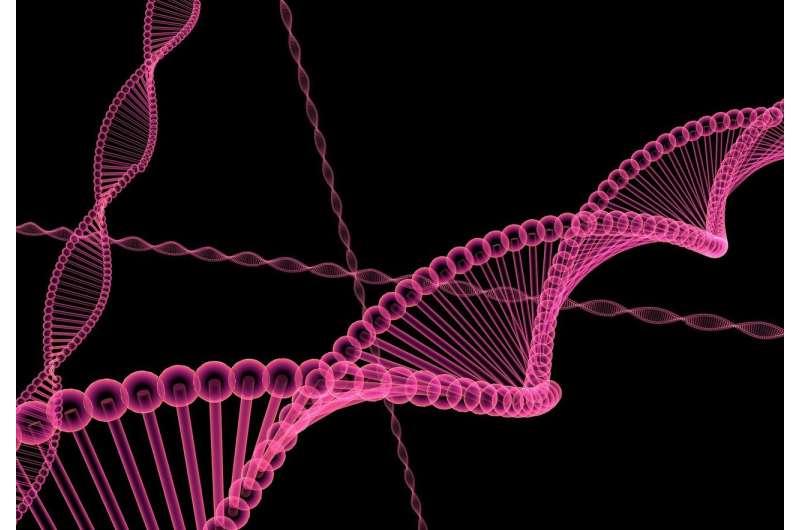New method facilitates study of the effects of chemicals on DNA

University of Arkansas physics researchers have developed a simple, cost-effective method to study the effects of chemicals on DNA which has potential to improve the development and testing of life-saving treatments.
Jack Freeland, an honors physics student in his junior year, worked with Yong Wang, assistant professor of physics, and Prabhat Khadaka, a post doctoral fellow, to create bent strands of DNA using a technique developed by Wang and colleagues at the University of California Los Angeles, where Wang was a doctoral student.
By bending strands of DNA, the researchers can amplify the effects of chemical interactions so that the effects can be observed more easily. Their study, which demonstrated the concept using magnesium and silver ions, was recently published in the journal Physical Review E, and the researchers have filed for a patent for their method.
In the study, the researchers demonstrated that their method could be used to observe interactions of DNA with metal ions using gel electrophoresis, a routine technique available in most chemistry and biochemistry labs.
This provides an alternative to other methods of studying DNA interactions, which are less sensitive or require expensive equipment. DNA has a double helix structure that is formed from two strands of paired molecules, or bases. The researchers created their amplifiers from two single strands of synthesized DNA, one with 45 bases and one with 30, so one is longer than the other. The bases of the two strands pair up so the ends of the longer strand bend toward the middle of the shorter strand to form a circular construction.
The bending that results from this construction places stress on the molecular bonds. Because the bonds are stressed, the effects of the metal ions are easier to observe. The researchers tested their amplifiers using magnesium ions, which are known to have a stabilizing effect on DNA, and silver ions, which are known to damage DNA.
When the bent DNA was exposed to magnesium ions, the researchers could observe that the stabilizing effect of the ions promoted the release of energy in the bent DNA, straightening them.
When the researchers exposed the bent DNA to silver ions, they observed that the presence of silver ions affected the ability of the DNA bases to pair up, an effect that was too small to be observed on non-bent strands of DNA.
"In addition to metal ions, it is likely that our bent DNA amplifiers can be used to investigate the interactions of DNA with other chemicals, including organic molecules and reagents," the researchers said in the paper. "In principle, it is even possible to develop our method into a convenient technique for screening DNA-targeting drugs."
More information: Jack Freeland et al. Mechanical-energy-based amplifiers for probing interactions of DNA with metal ions, Physical Review E (2018). DOI: 10.1103/PhysRevE.98.062403
Journal information: Physical Review E
Provided by University of Arkansas


















